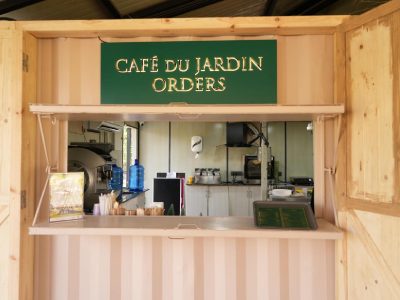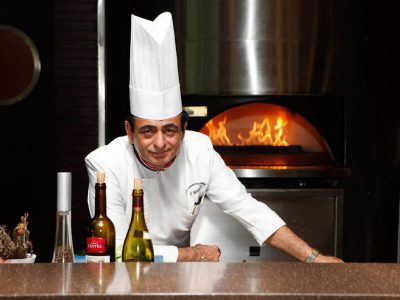On this World Photography Day, August 19, it’s a fitting time to explore how food photography has evolved. In today’s digital age, where a single image can garner thousands of likes and sway consumer behaviour, food photography has become more than just a trend — it’s a transformative art form. What began as casual snapshots of meals has now turned into a highly stylised practice, influencing everything from restaurant menus to home cooking trends.
The rise of social media platforms like Instagram and Pinterest has had a profound effect on food photography. What started as casual documentation of meals has become a complex process involving meticulous planning, advanced techniques, and a deep understanding of visual aesthetics.

Delhi NCR-based photographer Abhishek Khanna, known for his stunning food visuals told Patriot, “Food photography was once a niche field, with few specialists focussing solely on it. Before the COVID-19 pandemic, most photographers who did food photography also handled other genres like commercial, editorial, or lifestyle shoots. However, the lockdown era sparked a surge in food photography, as people experimented with recipes and shared their creations online, making content creation more vital than ever.”
In the past, food photography typically involved two distinct roles: the photographer, who captured the images, and the stylist, who handled plating and composition. While these roles still exist, a hybrid approach has emerged, especially with the rise of social media. Many photographers now also style their shots to meet the growing demand for frequent and fresh content.
“Today, the food industry is highly competitive, with restaurants needing regular photo shoots, sometimes as often as weekly, to keep up with the need for fresh images for social media. This shift has made food photography a more prominent and dynamic genre, reflecting the increased focus on food in social conversations,” added Khanna, 41.
Storytelling Through Food
Food photography has evolved beyond close-up shots and angled images that emphasise texture and detail. Today, there’s a growing preference for conceptual shots that tell a story. Photographers are increasingly incorporating props and complementary ingredients into the frame, creating a narrative around the dish. This shift reflects how both the demand and composition techniques in food photography have changed over time.
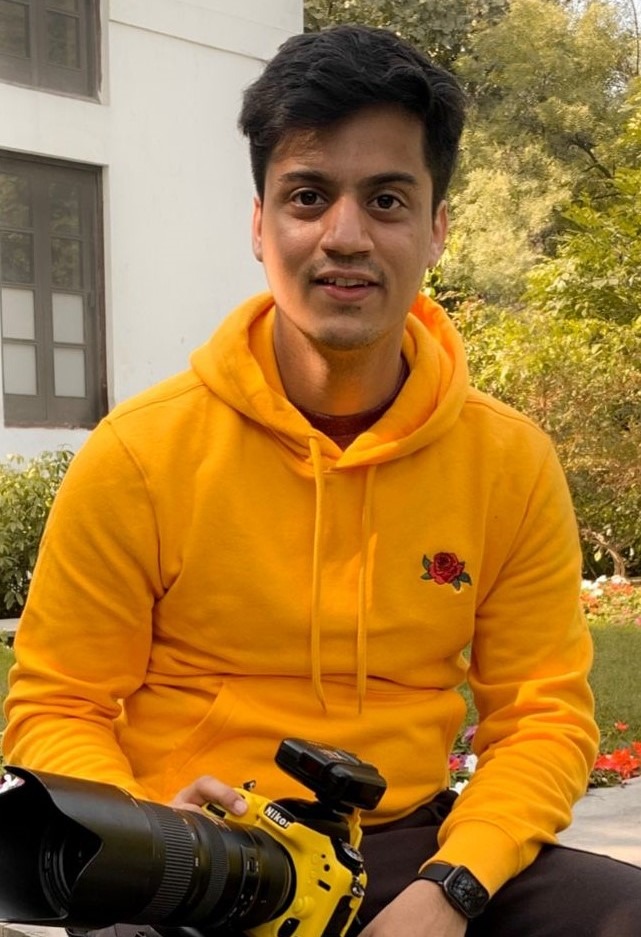
Moreover, AI has become a game-changer in the field. Ayush Jain, 27, another food photographer from Delhi, said, “Recently, I was shooting for a brand’s new collection of kulfis. During the shoot, we ran out of good mangoes. There was one mango left, but it wasn’t in great condition. That’s when AI came to the rescue. Despite using the defective mango, I adjusted the colour tones and other details with the help of AI, and in the end, it looked like a perfect Alphonso”.
The Art Of Collaboration: Chefs, Photographers Unite
In today’s food photography industry, photographers collaborate closely with chefs to achieve culinary perfection. This partnership ensures that every dish is presented in its most appetising form.
“I often collaborate closely with the chef to achieve the desired presentation. For instance, I might ask them to cook the food slightly underdone to preserve its colour and prevent it from shrinking and losing moisture. This close collaboration is essential because, while chefs focus on preparing food for consumption, as a photographer, my priority is to ensure the dish looks its best for the camera,” said Khanna.
Thomas George, 38, a professional food and lifestyle photographer based in Dubai and New Delhi, with clients across India and the Middle East, shares insights into the intricacies of food photography.

“Flat lays, a newer, two-dimensional approach, differ from the traditional 45-degree angle, which better highlights a dish’s depth and texture. Although flat lays are more convenient, they demand a keen understanding of composition, colour, and texture to make the food truly appetising,” he said.
Lighting is crucial, and the best results are often achieved using off-camera flash, either alone or in combination with natural light. George also highlights that, while post-production has become more accessible with tools like Photoshop, it has always been a vital step in enhancing food photos to ensure the final image is as visually appealing as possible.
Psychology Of Food Photography
The power of food photography goes beyond aesthetics — it taps into human psychology. Certain images can trigger hunger and influence taste perception, and understanding why this happens is key to mastering the craft.
The online food delivery market in India was valued at $4.35 billion in 2023 and is expected to grow at a CAGR of 16.24% from 2023 to 2028. High-quality food images significantly influence online food purchases. Swiggy and Zomato report that listings with professional food photographs see a 30-35% higher conversion rate compared to those without.
“Colour, composition, and lighting play crucial roles in how food is perceived,” says Keshav Sharma, 25, a food photographer in Delhi.
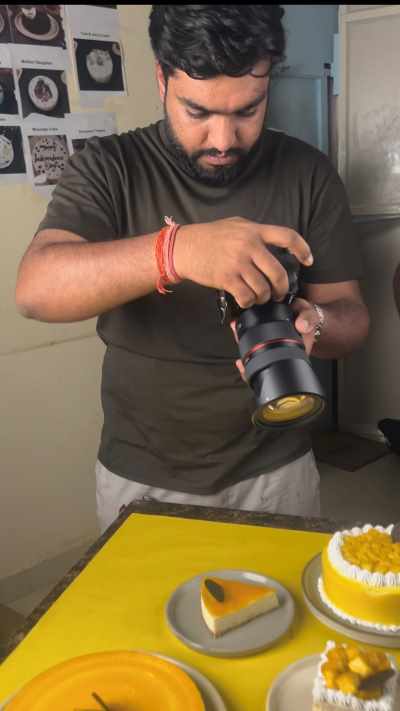
to minimise waste during the shoot
“Warm colours like red and orange tend to stimulate appetite, while cool tones like blues can suppress it. A well-composed image with balanced lighting can make a dish look more appetising and fresh.”
The use of natural light is particularly effective in food photography, as it mimics the light of a sunny day, making food look more inviting. Additionally, composition techniques like the rule of thirds and leading lines draw the viewer’s eye to the most appealing parts of the dish.
Sharma said that food photography often employs various techniques to minimise waste. For example, he used small bowls placed within a larger bowl to create surface height, filling only the top layer with noodles when shooting for a Chinese noodle brand. Similarly, instead of real milk, which can cause cereal to get soggy, white glue is often used because it keeps the cereal looking crisp and floating on top.
“The advertisements you see for Kellogg’s are shot in a similar way,” Sharma said with a laugh.
Passion Vs. Paycheck
“Not every day do we feel the urge to visit a restaurant and capture its culinary creations,” said Sharma.
“Yet food photographers often grapple with a reality beyond their passion: financial necessity. While enthusiasm for food photography drives creativity, the ultimate motivator is often monetary. In an industry where expenses for equipment, travel, and time can quickly add up, financial considerations are paramount. Passion alone cannot sustain the high costs and demands of this profession; money is not just a supplementary factor but a crucial component for many who seek to thrive in this field.”
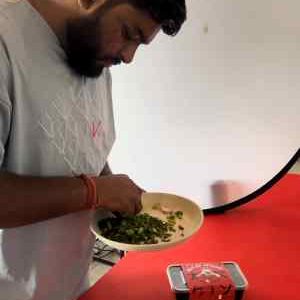
everything is perfect before the shot
The cost of hiring a food photographer can vary greatly depending on the project’s nature.
“My rates are determined by the complexity and specific needs of each assignment. For example, I recently completed a launch campaign for a premium burger brand, where I photographed 25 items, including burgers, sides, and drinks. The goal was to capture the brand’s high-quality appeal, and the project cost fell between Rs 60,000 to Rs 80,000.”
For ongoing social media photography, such as regular posts for brands like Theobroma, Sharma offers monthly packages ranging from Rs 20,000 to Rs 40,000.
As food photography becomes more sophisticated, its influence on consumer behaviour has grown, particularly with the rise of food delivery applications. In a world where diners often choose their meals based on images rather than descriptions, the stakes for capturing the perfect photo are higher than ever.
“At the end of the day, it all comes down to business. Food photography can no longer be viewed in isolation — it’s intrinsically linked to the broader food and beverage industry, playing a crucial role in its success today,” said food stylist Nitin Tandon.



